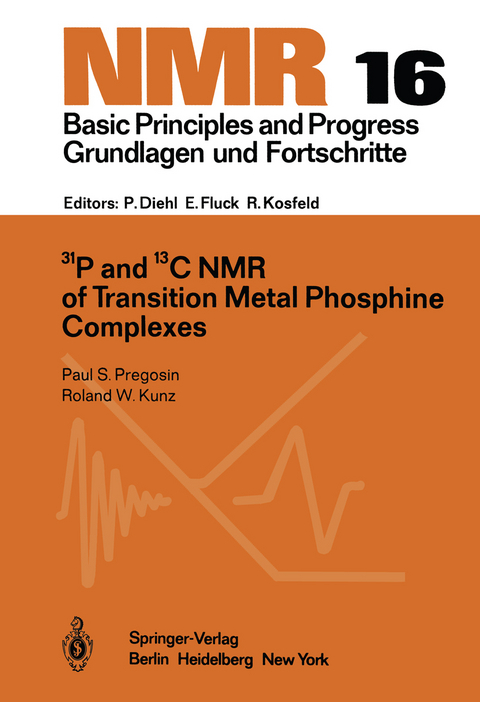
31P and 13C NMR of Transition Metal Phosphine Complexes
Springer Berlin (Verlag)
9783642488320 (ISBN)
A Motivation and Methodology.- I Introduction.- II Measurement Techniques.- III Spin-Lattice Relaxation Times.- IV The 31P Nuclear Overhauser Effect.- B Coupling Constants.- I One-Bond Metal-Phosphorus Coupling Constants.- II Two-Bond Phosphorus-Phosphorus Coupling Constants.- III One-Bond Metal-Phosphorus Coupling Constants - A Survey.- IV Two-Bond Phosphorus-Phosphorus Coupling Constants - Data.- C Chemical Shifts.- D Applications.- E 13C Studies of Phosphorus Containing Complexes.- I Studies of Coordinated Phosphorus Ligands.- II Studies of Non-Phosphorus Ligands in Phosphorus-Complexes.- F Appendices.- A The Influence of Tr-Orbitals on the Coupling Constant.- B Numerical Values of |?ns(O)|2.- C Differences in 1J(M,P), 2J(P,P)cis and 2J(P,P)trans.- G Tables.- H References.
| Erscheint lt. Verlag | 14.4.2012 |
|---|---|
| Reihe/Serie | NMR Basic Principles and Progress |
| Zusatzinfo | IX, 158 p. |
| Verlagsort | Berlin |
| Sprache | englisch |
| Maße | 170 x 244 mm |
| Gewicht | 308 g |
| Themenwelt | Naturwissenschaften ► Chemie ► Anorganische Chemie |
| Schlagworte | carbon • Chemistry • Magnetische Kernresonanz • metals • Molecule • Organische Phosphorverbindung • phosphorus • transition element • Transition metal • Übergangselementverbindung |
| ISBN-13 | 9783642488320 / 9783642488320 |
| Zustand | Neuware |
| Informationen gemäß Produktsicherheitsverordnung (GPSR) | |
| Haben Sie eine Frage zum Produkt? |
aus dem Bereich


